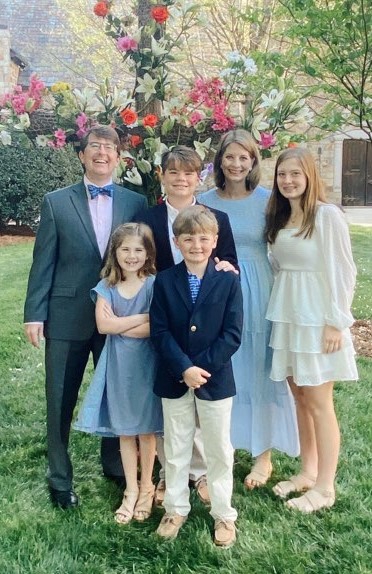I was proud to be the attorney for a veteran who got seriously hurt at work in Spartanburg. Tim was deployed to Kuwait for almost nine months in 2012 as part of Operation Enduring Freedom. He served as a wheeled mechanic, keeping all vehicles running for soldiers on missions or patrols.
His case proved challenging for several reasons. Initially, the most challenging thing was that no one realized how seriously hurt he was, not even his doctor. But I believed him, and I took on a risky case.
Luckily for Tim, we were able to fight for him to get him the medical care he needed for unexpectedly grave spinal injuries. In the end, we also helped him secure a high settlement by workers' compensation standards. This helped him preserve his family's financial stability while he searched for a career that could accommodate his serious work restrictions.
When he got hurt, Tim was 36. He worked as a tractor-trailer mechanic. As Tim rolled a tractor-trailer tire, it fell over, and he caught it, causing pain to shoot from his mid-back down his lower back.
Why Going It Alone With a Serious South Carolina Work Injury Usually Doesn’t Go Well
Like many of our clients, Tim tried to handle his case on his own at first until the insurance company stopped responding to him. In his case, the insurance company had good reason to stop responding, at least from their perspective. When he hired us, his workers’ comp doctor had released Tim to full duty for nearly two months.
Tim said he'd tried to return to the doctor. In workers’ compensation cases, no matter how badly you're hurt, you can't go to the doctor unless the insurance company approves it. Tim called the adjuster several times to get approval, but the adjuster ignored him.
Worse, the insurance company was serious about shutting his case down. It hired a lawyer, whom Tim tried to face on his own for a while. Tim reported opposing counsel set a clincher conference. That's a meeting between an injured worker, the insurance company defense lawyer, and a workers’ compensation commissioner. The purpose of the meeting is to see if the commissioner will allow the insurance company to pay off the claimant in a settlement called a clincher, where the claimant gives up all of his workers’ compensation rights. If the insurance company is successful here, that means no more medical care for injuries, no more weekly checks, and no more money other than what they pay in the settlement. The question I have for any claimant facing one of these clincher conferences is, do you know how to evaluate a workers’ comp settlement so you don't get cheated by the insurance company?
Tim Gets Results When He Gives Us His Case
Luckily, Tim hired us before the clincher conference, so it was me who did the shutting down. It seems to me that set the tone for the insurance company's response to the rest of the case. The insurance company greeted the unexpected severity of Tim's injury with skepticism and resistance. They fought tooth and nail against all of the major treatments he needed and delayed as much as possible, which created not just more work for us but more complex work.
I immediately let opposing counsel know Tim needed to go back to the doctor, an orthopedic spinal surgeon. Within three weeks of hiring us, he had an appointment. By that time, he was hurting so badly that he couldn't work anymore. Based on his symptoms, the surgeon ordered him to stay out of work until another MRI.
The MRI carried a grave result. It revealed Tim sustained a bulging spinal disc at L5-S1 with lumbar radiculopathy, ultimately requiring an L5-S1 fusion that was nowhere near a complete fix.
How This Case Proves the Worse an Employee Is Hurt, the Harder the Insurance Company Can Fight Them
After PT and an epidural shot in his spine failed, the surgeon ordered a unique but not experimental procedure called Intracept. That set off a firefight. The insurance company delayed it, sending the surgeon a questionnaire that made their skepticism plain. It asked him to verify that the procedure was medically necessary, related, and the only treatment that could help as much. Most tellingly, it asked how much it would cost.
PRO TIP: Questionnaires in workers’ compensation cases can make a huge difference. They are designed to ask doctors simple yes or no questions about the major medical issues in the case. It's a way of simplifying and summarizing these issues so commissioners don't have to wade through hundreds of pages of medical evidence or doctor testimony to figure them out. If done skillfully by an experienced South Carolina workers’ compensation attorney, they can literally win your case. I've had a questionnaire mentioned in opinions by the South Carolina Court of Appeals and the South Carolina Supreme Court.
Anticipating a denial and a hearing to get the procedure approved, I met with the surgeon and secured a questionnaire indicating that the Intracept procedure is cheaper, safer, and dramatically less life-altering than a fusion. After receiving that, the insurance company finally approved it.
Unfortunately, Intracept didn't work. The surgeon was left with no other choice but to order a highly serious spine operation called an L5-S1 fusion. The insurance company responded by denying it, ordering Tim to undergo a second opinion. I filed a Form 50 to request a hearing to get the operation ordered. But I made the determination we wouldn't be obstructive like the insurance company. I told Tim to attend the second opinion and prepared him for it. The highly respected neurosurgeon who conducted the second opinion concurred with the fusion, so the insurance company finally approved it.
Doctor Questionnaires Prove Critical To Get a Better South Carolina Workers Compensation Settlement
One of my questionnaires to Tim’s surgeon served a separate, vital purpose. It set up a future argument for the highest possible settlement under workers’ compensation, called permanent and total disability. The strategy I deployed in the questionnaire involved the surgeon confirming Tim’s spinal injuries affected both legs. This qualified Tim for permanent and total disability by satisfying South Carolina's “two injury rule.” Under the two injury rule, an injured South Carolina employee can qualify for permanent and total disability if their injuries affect more than one body part. It doesn't require both body parts to be physically injured in a work accident. But it does require a sharp, experienced South Carolina workers’ compensation attorney who insurance companies will take seriously.
When Tim’s awful pain didn't subside after the operation, the surgeon referred him to a pain management specialist. In this highly contested case, I knew to take all possible precautions to protect Tim’s rights. I also got a questionnaire from the specialist. It confirmed:
- The nature of Tim’s pain and debilitation in exquisite detail
- Injuries affecting multiple body parts
- Multiple treatments did not eliminate the pain, including steroid shots and nerve ablations [a procedure where damaged nerve endings are burned off]
- Tim was honest about his pain and didn't malinger, which I saw as a potential issue because his functional capacity evaluation could be interpreted that he didn't try his best when he was actually limited by pain,
- The pain was permanent and significant, giving basic but powerful details about how it limited him in life and work
Little Things an Experienced South Carolina Workers Compensation Lawyer Can Do to Make a Big Difference for Injured Employees
As is almost always the case, Tim encountered various administrative roadblocks that were capably handled by my paralegal, Rose. As adjusters changed throughout the case, there were several times when weekly checks were not sent to Tim. Getting this benefit was critical for him to support his young family since he couldn't work. Rose continually reached out to opposing counsel to get the checks reinstated and the missing checks reissued. Rose reached out to opposing counsel multiple times to schedule medical treatment. Despite the fact it wasn't us who wanted it, Rose worked to get a second opinion scheduled as soon as possible. Immediately after the fusion operation, Tim needed home health care, but they went to the wrong address. Rose got that fixed.
When Tim got referred for a functional capacity evaluation to set his permanent work restrictions, I prepped Tim to help him make an honest effort and thoroughly describe his pain and limitations. This required me to review the medical records and Tim’s limits myself, then with Tim.
To further qualify Tim for permanent and total disability benefits, I also referred him for a vocational evaluation. That's where an expert, called a vocational consultant, reviews your medical condition and gives you some physical and mental tests to reveal what kinds of jobs you qualify for.
Not to be outdone, the insurance company requested a vocational evaluation too. When I got the insurance company eval, I had our evaluator critique it. He provided solid insights into the shortcomings of the defense’s effort, which I sent to the mediator and could use at a hearing later.
Big Things an Experienced South Carolina Workers Compensation Attorney Can Do To Make a Big Difference
Once we had all the medical evidence, I created a demand letter. This required me to spend hours assimilating all the evidence in the case and then distilling it into a meaningful package sent to the defendant to help them forge a settlement to achieve Tim’s goals. I analyzed medical records and summaries to present the most important treatment aspects. Evidence of permanency required developing a final, thorough list of Tim’s limits at work and in life, plus a detailed description of Tim’s pain, which I compiled using information from Tim. I also highlighted the relevant functional capacity evaluation findings.
Before sending the demand, I met with Tim to discuss our settlement evaluation. I wanted to give him enough time to consider it fully so he could make the right settlement decision.
When settlement negotiations generated no meaningful response, I filed a hearing request seeking permanent and total disability benefits, which required mediation. Mediation did not result in an immediate settlement, but it did generate useful discussions. When settlement hopes failed to brighten in a suitable time, I filed for a different hearing to get a commissioner to order the insurance company to provide a highly expensive, last-ditch medical effort ordered by the pain doctor to relieve Tim’s pain, called a spinal cord stimulator. Shortly thereafter, negotiations resumed, and the insurance company made the settlement offer resolving the case.
How Tim's Case Ended Well
We settled for $200,000, achieving Tim’s goal of financial stability.
My efforts resulted in:
- Getting Tim back to the doctor despite being released to full duty after Tim tried numerous times before hiring us.
- Medical questionnaires establishing the right to permanent and total disability benefits and preempting a potential defense functional capacity evaluation interpretation of malingering.
- A solid performance by Tim at his deposition, functional capacity evaluation, and both vocational evaluations.
- A vocational evaluation to support a potential permanent and total disability finding and, with a strong argument against the defense’s vocational eval.
- A successful settlement strategy aimed solely at Tim’s best interest, not merely settling.
- Utica Mohawk language to protect any potential social security disability rights.


